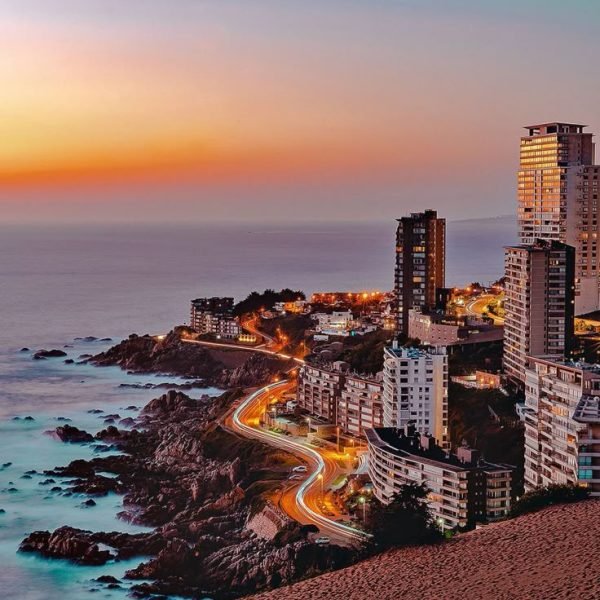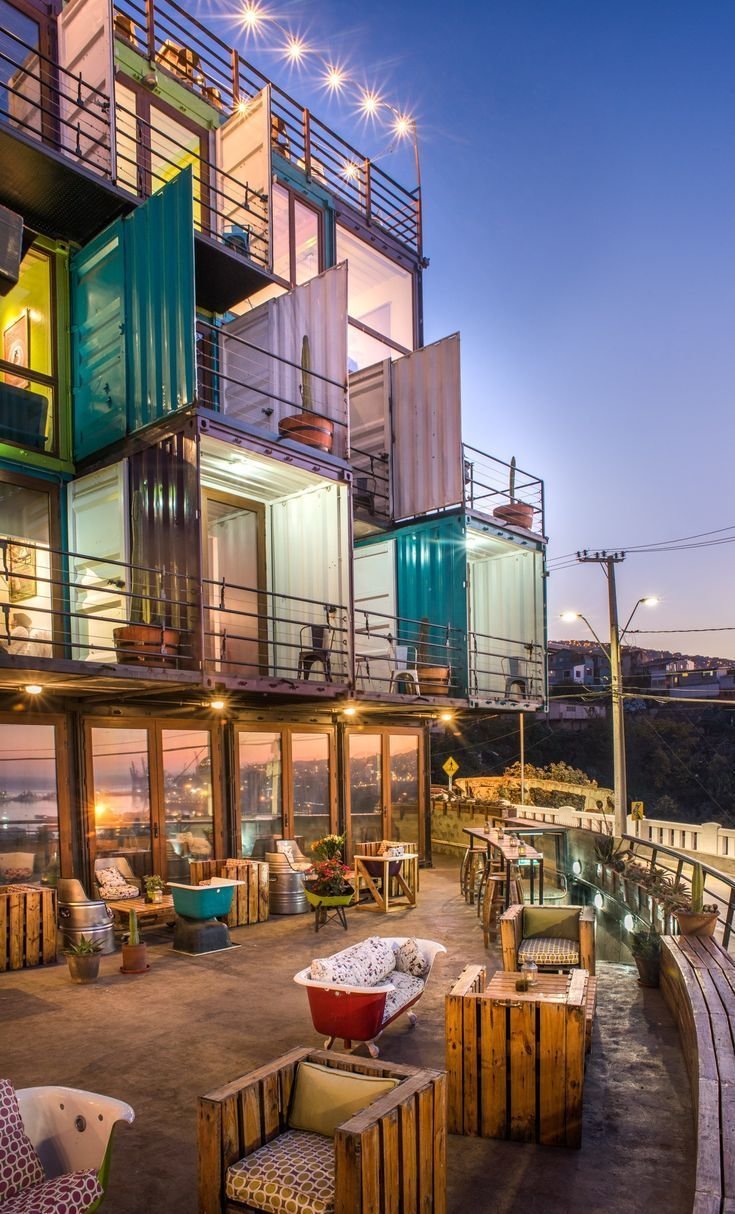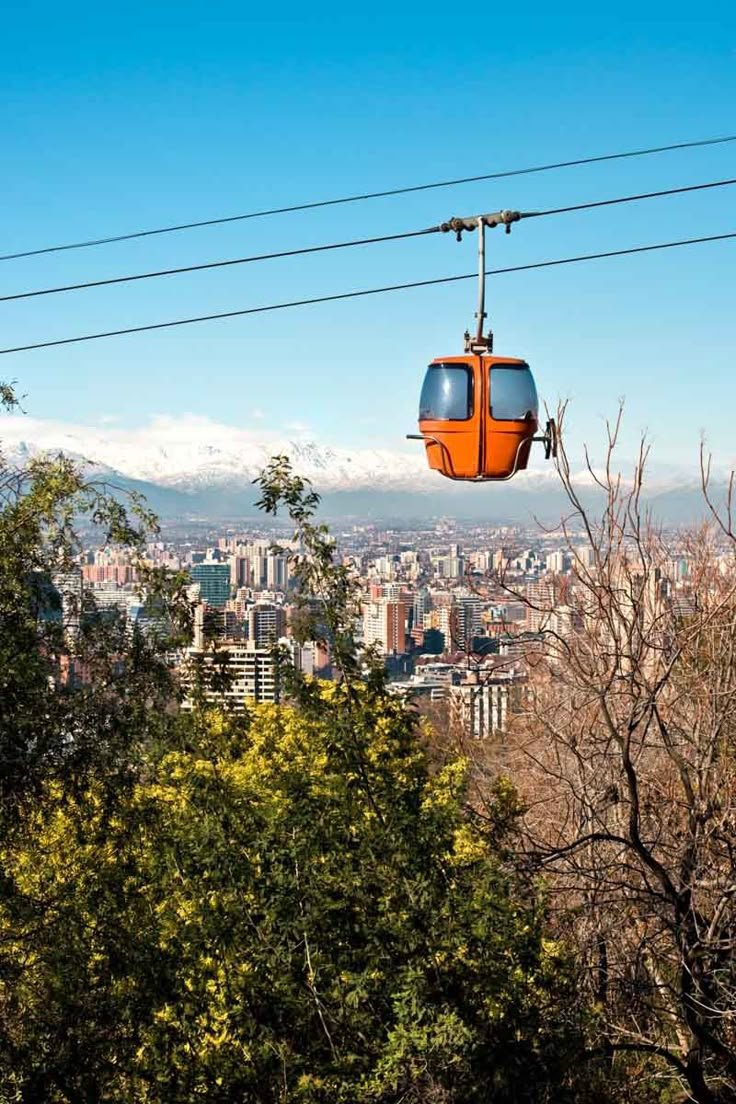Chile
Welcome to Chile
Welcome to Chile, a land of stunning contrasts and rich cultural heritage nestled along the southwestern edge of South America. Stretching over 4,300 kilometers from the driest desert in the north to the icy fjords of Patagonia in the south, Chile offers an extraordinary variety of landscapes, vibrant cities, and unique experiences for every traveler.
Chile’s geography is one of its most defining features. The country is incredibly narrow—only about 150 miles wide at its broadest point—but it stretches from the Atacama Desert, the driest place on Earth, down to the breathtaking glaciers and rugged mountains of Patagonia. Between these extremes lie fertile valleys, pristine lakes, active volcanoes, and a long Pacific coastline dotted with charming beach towns. The capital city, Santiago, is a bustling metropolis framed by the Andes mountains. It combines modern amenities with rich history and culture, offering museums, parks, and a lively culinary scene. Coastal cities like Valparaíso enchant visitors with colorful hillsides, street art, and bohemian vibes, while the Lake District invites outdoor enthusiasts to explore its forests, lakes, and volcanoes. Further south, Patagonia is a paradise for adventurers, with iconic national parks like Torres del Paine showcasing dramatic peaks, glaciers, and abundant wildlife.
Chile also boasts unique cultural treasures, including the mysterious Moai statues of Easter Island and the vibrant traditions of the indigenous Mapuche people. The country’s wine regions, such as Casablanca and Maipo Valleys, produce world-class wines that attract connoisseurs from around the globe.
Why Visit Chile in 2025?
1.
Diverse Natural Wonders: From the Martian landscapes of the Atacama Desert to the majestic glaciers of Patagonia, Chile offers some of the most varied and awe-inspiring scenery on the planet. 2025 is an excellent year to explore these diverse environments, with improved infrastructure making even remote areas more accessible.

2.
Rich Cultural Experiences: Chile’s vibrant cities, indigenous heritage, and unique festivals provide travelers with immersive cultural encounters. Whether it’s the lively Fiestas Patrias in September, the artistic spirit of Valparaíso, or the ancient mysteries of Easter Island, Chile’s cultural tapestry is as compelling as its landscapes.

Planning Your Trip
Visa Information
Visitors from many countries, including the United States, Canada, Australia, and most European nations, do not require a visa for tourist stays of up to 90 days. However, it is essential to check the latest entry requirements before traveling, as visa policies can change. Travelers should also ensure their passports are valid for at least six months beyond their planned departure date.
Best Time to Visit
Chile’s elongated shape means its climate varies greatly by region, so the best time to visit depends on your destinations and interests:
- Northern Chile (Atacama Desert): Best visited in the spring and autumn months (September to November and March to May) when temperatures are milder.
- Central Chile (Santiago, Valparaíso, Wine Regions): Spring (September to November) and autumn (March to May) offer pleasant weather with fewer tourists.
- Patagonia and Southern Chile: The summer months (December to February) provide the warmest weather and longest daylight hours, ideal for hiking and outdoor activities.
Ski Season: For skiing enthusiasts, June to September is the prime season in the Andes near Santiago.
Getting To and Around
Getting to Chile
Chile’s main international gateway is Arturo Merino Benítez International Airport in Santiago, which is well connected to major cities worldwide. Several airlines offer direct flights from North America, Europe, and other South American countries.
Getting Around Chile
- Domestic Flights: Given Chile’s length, flying is often the most efficient way to travel between regions, especially to remote areas like Patagonia and the Atacama Desert.
- Buses: Chile has a reliable and extensive long-distance bus network connecting most cities and towns, offering a budget-friendly way to explore the country.
- Car Rentals: Renting a car is a great option for exploring central Chile and the Lake District at your own pace.
- Public Transport in Cities: Santiago has a modern metro system and an extensive bus network. Other cities like Valparaíso offer local buses and taxis.

Accommodation
Chile’s lodging options range from budget-friendly hostels and cozy guesthouses to luxurious all-inclusive resorts and boutique hotels, often set in spectacular natural surroundings.
Budget and Mid-Range Stays
For travelers on a budget or those seeking authentic local experiences, Chile has numerous hostels, guesthouses, and small hotels. In cities like Santiago, Valparaíso, and Puerto Natales, you’ll find well-reviewed hostels offering clean, comfortable rooms with communal kitchens and social spaces. For example, Eco-Hostal Tambo Verde in Santiago provides allergy-free rooms and a garden setting, ideal for families and solo travelers alike. In Valparaíso, Hotel Winebox offers private terraces and a welcoming atmosphere with easy access to the city’s cultural highlights. These options typically range from very affordable to moderate prices, perfect for backpackers and mid-range travelers.
Boutique and Unique Lodgings
Chile also boasts charming boutique hotels that combine modern comfort with local character. In Santiago, Le Rêve Boutique Hotel is a popular choice, offering stylish rooms and personalized service. On Easter Island, the Taha Tai Hotel provides a peaceful retreat surrounded by nature, blending cultural authenticity with comfort. For those who prefer a touch of rustic charm, places like Swiss Eco Lodge La Linda Loma near Parque Nacional La Campana offer cozy cabins in serene natural settings.
Luxury and All-Inclusive Resorts
For a more indulgent stay, Chile’s luxury hotels and all-inclusive resorts deliver exceptional service, gourmet dining, and immersive experiences. Patagonia, in particular, is home to some of the country’s most renowned lodges. Tierra Patagonia and The Singular Patagonia are architectural marvels that offer breathtaking views, upscale amenities, and guided excursions into the wilderness. Nayara Hangaroa and Explora Rapa Nui on Easter Island provide exclusive all-inclusive packages that include meals, activities, and transfers, perfect for travelers seeking convenience and luxury.
Other notable all-inclusive resorts include Patagonia Camp, which impresses with its glamping tents, gourmet food, and tailored hiking programs, and Hotel Termas Puyehue Wellness & Spa Resort, known for its spa facilities and natural hot springs. These resorts often feature private balconies, wellness centers, and curated excursions, allowing guests to fully immerse themselves in Chile’s diverse landscapes while enjoying top-tier comfort.
Booking Tips
Because Chile stretches over a vast distance, many travelers choose to split their stays across regions, combining city hotels with countryside lodges or coastal inns. Booking in advance is advisable, especially during peak seasons in Patagonia (summer months) and the Atacama Desert (spring and autumn). Many accommodations offer flexible cancellation policies, making it easier to plan a multi-destination itinerary.

Food and Drink
Chile’s culinary scene is a vibrant reflection of its geography and cultural heritage, blending indigenous ingredients, Spanish influences, and modern gastronomy.
Traditional Chilean Cuisine
Chilean food emphasizes fresh, local ingredients such as seafood, corn, potatoes, and native herbs. A must-try dish is empanadas, baked pastries filled with meat, cheese, or seafood. Pastel de choclo is a hearty corn pie layered with meat, onions, and olives, showcasing the country’s agricultural bounty.
Seafood lovers will delight in Chile’s abundance of fresh fish, shellfish, and crustaceans. Dishes like ceviche (raw fish marinated in citrus), congrio (eel stew), and curanto (a traditional southern Chilean dish of seafood, meat, and potatoes cooked in an earth oven) highlight the coastal flavors. Street food stalls and markets often serve completo—a Chilean hot dog loaded with avocado, tomatoes, mayonnaise, and sauerkraut.
Wine and Beverages
Chile is internationally renowned for its wine production, with vineyards spread across regions like Maipo, Colchagua, and Casablanca Valleys. Chilean wines, especially Cabernet Sauvignon, Carménère, and Sauvignon Blanc, are widely praised for their quality and value. Many wineries offer tours and tastings, allowing visitors to sample wines paired with local cheeses and charcuterie.
For a traditional drink, try pisco sour, a cocktail made with Chilean pisco (a grape brandy), lime juice, sugar, and egg white, served frothy and refreshing. Mote con huesillo, a sweet non-alcoholic drink made from husked wheat and dried peaches, is a popular summer refreshment.
Modern and Fusion Cuisine
Chile’s culinary scene is evolving with a new generation of chefs blending traditional ingredients with international techniques. Santiago and Valparaíso have vibrant restaurant scenes where you can enjoy innovative dishes that fuse Chilean flavors with Asian, Mediterranean, and other global cuisines. Farm-to-table restaurants emphasize sustainability and local sourcing, offering fresh, seasonal menus that change regularly.
Dining Tips
Meals in Chile are generally eaten later than in many Western countries. Lunch is the main meal of the day, often served between 1 pm and 3 pm, while dinner typically starts around 8 pm or later. Many restaurants offer a menú del día (menu of the day) at lunchtime, which is a great way to enjoy a full meal at a reasonable price.
Tipping is customary but modest, usually around 10% of the bill. In more casual eateries or street food stalls, tipping is less common but appreciated for excellent service.

Must-See Attractions
- Torres del Paine National Park
Located in the southern Patagonian region, Torres del Paine is Chile’s crown jewel of natural wonders. This UNESCO Biosphere Reserve spans over 113,000 hectares of glaciers, turquoise lakes, and jagged mountain peaks. The park’s iconic granite towers, from which it takes its name, dominate the skyline and attract hikers and nature lovers worldwide. Visitors can explore various trails, from the challenging multi-day “W Trek” to easier day hikes, all offering breathtaking views of glaciers, waterfalls, and abundant wildlife such as guanacos and Andean condors. The park’s dramatic landscapes change with the weather, creating a dynamic and unforgettable experience. - Santiago and Cerro San Cristóbal
Chile’s bustling capital, Santiago, is a vibrant blend of history, culture, and modernity. The city is framed by the Andes Mountains and offers a lively urban experience with museums, markets, and a thriving culinary scene. A must-visit spot in Santiago is Cerro San Cristóbal, a hill with panoramic city views accessible by funicular or cable car. At the summit, visitors find a giant statue of the Virgin Mary, tranquil Japanese gardens, and local vendors selling crafts and snacks. The surrounding neighborhoods, such as Bellavista, are known for colorful street art, cafés, and nightlife. - Atacama Desert and Valle de la Luna
The Atacama Desert is the driest non-polar desert in the world and offers surreal landscapes that look almost extraterrestrial. San Pedro de Atacama, the gateway town, is the base for exploring salt flats, geysers, and colorful lagoons. Valle de la Luna (Moon Valley) is famous for its ochre and golden rock formations that glow spectacularly at sunset. Early risers can visit the El Tatio Geysers to witness steam columns rising at dawn. The Atacama is also one of the best places on Earth for stargazing due to its high altitude and minimal light pollution, offering unforgettable astronomy tours. - Valparaíso
Known as Chile’s cultural capital, Valparaíso is a UNESCO World Heritage Site famous for its steep hills, vibrant street art, and bohemian atmosphere. The city’s colorful houses cascade down to the Pacific Ocean, and its historic port area is dotted with museums and cafés. Visitors can ride the historic funiculars up the hills, explore the artistic neighborhoods of Cerro Alegre and Cerro Concepción, and discover the legacy of poet Pablo Neruda, whose quirky house, La Sebastiana, is open to the public. - Easter Island (Rapa Nui)
One of the most remote inhabited islands in the world, Easter Island is renowned for its mysterious Moai statues. This Polynesian island offers a unique blend of archaeological wonders, volcanic landscapes, and vibrant local culture. Visitors can hike to the Rano Raraku quarry where the statues were carved, explore the ceremonial village of Orongo, and snorkel in crystal-clear waters. Easter Island’s cultural festivals and traditional music provide a fascinating insight into its heritage. - Chilean Lake District and Patagonia National Parks
The Lake District, with its glacial lakes, snow-capped volcanoes, and lush forests, is ideal for outdoor enthusiasts. Towns like Puerto Varas offer charming lakeside accommodations and access to national parks such as Vicente Pérez Rosales. Further south, Patagonia’s wilderness extends beyond Torres del Paine to places like Cochamó Valley, often called the “Yosemite of South America,” with towering granite cliffs perfect for climbing and trekking.

Must-Do Activities
- Trekking and Hiking
Chile is a hiker’s paradise, with trails ranging from leisurely walks to multi-day expeditions. The Torres del Paine “W Trek” is the most famous, offering spectacular views of glaciers, mountains, and wildlife. In the Lake District, trails around Villarrica and Osorno volcanoes provide stunning vistas and opportunities for birdwatching. The Atacama Desert’s Valle de la Luna and El Tatio Geysers are perfect for day hikes with surreal scenery. - Stargazing in the Atacama Desert
Thanks to its altitude and clear skies, the Atacama Desert is one of the world’s premier spots for astronomy. Several observatories near San Pedro de Atacama offer guided night tours with powerful telescopes, allowing visitors to see planets, nebulae, and the Milky Way in extraordinary detail. This celestial experience is both educational and awe-inspiring. - Wildlife Watching
Chile’s diverse ecosystems host fascinating wildlife. In Patagonia, you can spot guanacos, foxes, and if lucky, elusive pumas. Birdwatchers will delight in the Andean condors soaring above Torres del Paine. Along the coast, Humboldt penguins can be seen at the Los Pingüinos Natural Monument, and marine mammals like sea lions and dolphins are common in southern fjords. - Cultural Tours and Festivals
Immerse yourself in Chilean culture by exploring local markets, museums, and festivals. Santiago’s Plaza de Armas and Mercado Central are hubs of activity and tradition. Valparaíso’s street art tours reveal the city’s creative soul. Time your visit to coincide with Fiestas Patrias in September, Chile’s national holiday, celebrated with traditional music, dance, and food. - Wine Tasting in the Valleys
Chile’s wine regions, such as Maipo, Casablanca, and Colchagua Valleys, produce some of the world’s finest wines. Many vineyards offer tours and tastings, where visitors can learn about winemaking and sample varieties like Carménère, Cabernet Sauvignon, and Sauvignon Blanc. Paired with local cheeses and artisanal bread, these experiences are a delight for the senses. - Adventure Sports
For adrenaline seekers, Chile offers activities like kayaking in Patagonia’s glacial lakes, white-water rafting on the Futaleufú River, and skiing in the Andes during winter months. The Cochamó Valley is a hotspot for rock climbing and trekking, often called the “Yosemite of South America” for its granite walls. - Exploring Easter Island
Walking or biking around Easter Island lets you discover its archaeological sites and natural beauty intimately. Guided tours explain the history and legends behind the Moai statues, while snorkeling and diving reveal vibrant coral reefs and marine life.

Travel Tips
Traveling to Chile in 2025 promises an unforgettable adventure, but like any destination, being well-prepared enhances both safety and enjoyment. Here’s a comprehensive guide with essential travel tips covering safety advice, local customs, and language basics to help you navigate Chile confidently and respectfully.
Safety Advice
- Stay Vigilant Against Petty Crime
Chile is generally safe, but petty crime such as pickpocketing and bag snatching can occur, especially in crowded urban areas like Santiago, Valparaíso, and popular tourist spots. Always keep your belongings secure and avoid displaying valuables such as expensive cameras, jewelry, or large amounts of cash. Be particularly cautious in busy markets, public transportation, and tourist hubs. Thieves sometimes work in groups, using distractions to steal, so stay alert if strangers try to engage you in conversation or cause commotion around you. - Use Reputable Transportation
When taking taxis, opt for pre-booked or officially licensed services rather than hailing cabs off the street. Ride-sharing apps like Uber operate in major cities and are a safer alternative. Airport taxis may sometimes be unlicensed, so arrange your ride through your accommodation or official counters. Public transportation is generally safe, but keep an eye on your belongings, especially on crowded buses. - Be Prepared for Natural Hazards
Chile lies on the Pacific Ring of Fire, making it prone to earthquakes and volcanic activity. Earthquakes are relatively common but usually brief. Familiarize yourself with safety procedures, such as “drop, cover, and hold” during tremors, and learn evacuation routes at your accommodation. If you plan to hike or explore volcanic regions, stay updated on local alerts and avoid restricted areas. - Avoid Risky Areas and Stay Informed
Certain neighborhoods in cities like Santiago and Valparaíso have higher crime rates. In Santiago, exercise caution around parks like Cerro San Cristóbal and Cerro Manquehue, especially when alone or after dark. In Valparaíso, avoid walking alone in less populated or poorly lit areas, particularly on the hills and near the harbor at night. The Araucanía region in southern Chile currently experiences civil unrest and is best avoided by travelers. - Watch Out for Drink-Spiking and Scams
In nightlife areas such as Bellavista and Suecia Street in Santiago, incidents of drink-spiking have been reported. Never leave your drink unattended or accept beverages from strangers. Be wary of common scams like the “bird poo” trick, where a person deliberately soils you to distract you while an accomplice steals your belongings. - Protect Yourself from Stray Animals
Chile has a notable population of stray dogs, some of which may carry diseases like scabies or rabies. While many are friendly, it’s best not to pet or approach stray animals to avoid health risks. - Health Precautions
Tap water is generally safe in major cities, but in rural or remote areas, it’s advisable to drink bottled water. Protect yourself from the strong sun, especially in the north, where the ozone layer is thin. Use sunscreen, wear hats, and stay hydrated. If you plan to visit high-altitude areas, be aware of altitude sickness symptoms and take time to acclimate. - Emergency Contacts and Documentation
Save local emergency numbers: 133 for police and 131 for medical emergencies. Keep a copy of your passport and visa (if required) separate from the originals. Register with your embassy or consulate upon arrival for added security and assistance if needed.
Local Customs
- Greetings and Social Etiquette
Chileans are warm and polite. A common greeting is a handshake, or among friends and family, a single cheek kiss. Address people with formal titles like “Señor” or “Señora” followed by their last name until invited to use first names. Chileans value punctuality but are generally relaxed about time in social settings. - Respect for Traditions
Chileans take pride in their cultural heritage. When visiting indigenous communities or rural areas, show respect by asking permission before photographing people or their property. During national holidays, such as Fiestas Patrias in September, participate respectfully in festivities, which often include traditional dances, music, and food. - Dress and Behavior
In cities, casual but neat attire is common. When visiting religious sites or formal events, dress conservatively. Public displays of affection are generally accepted, but loud or disruptive behavior is frowned upon. Chileans appreciate polite manners and patience, especially when dealing with service staff. - Tipping
Tipping is customary but modest. In restaurants, a 10% tip is standard if service is not included in the bill. Taxi drivers, hotel porters, and guides also appreciate small tips for good service.
Language Basics
Spanish is the official language of Chile, and while English is spoken in tourist areas and by younger people, learning some basic Spanish phrases will enrich your experience and help in everyday interactions.
Common Spanish Phrases for Travelers:
- Hola – Hello
- Por favor – Please
- Gracias – Thank you
- ¿Cuánto cuesta? – How much does it cost?
- ¿Dónde está el baño? – Where is the bathroom?
- No hablo español muy bien – I don’t speak Spanish very well
- ¿Habla inglés? – Do you speak English?
- Ayuda – Help
- Estoy perdido/a – I am lost
- Una mesa para dos, por favor – A table for two, please
Pronunciation Tip: Chilean Spanish has a distinctive accent and some unique slang, but locals appreciate any effort to speak Spanish, even if imperfect.
Final Tips for a Smooth Journey
Chile is a fascinating and diverse country that welcomes travelers with open arms. By staying vigilant about safety, respecting local customs, and embracing the language, you’ll not only protect yourself but also deepen your connection to this vibrant culture. Whether exploring the bustling streets of Santiago, marveling at Patagonia’s wilderness, or wandering the surreal Atacama Desert, these travel tips will help ensure your 2025 journey through Chile is safe, smooth, and truly memorable.

